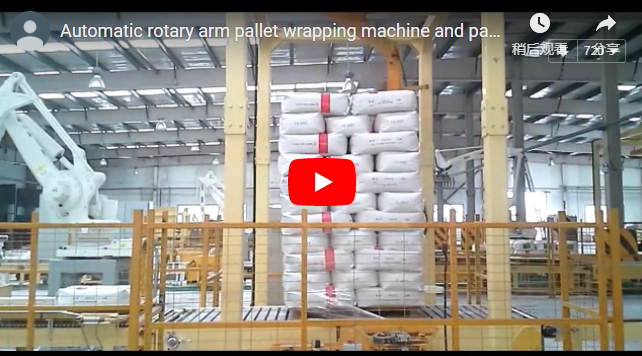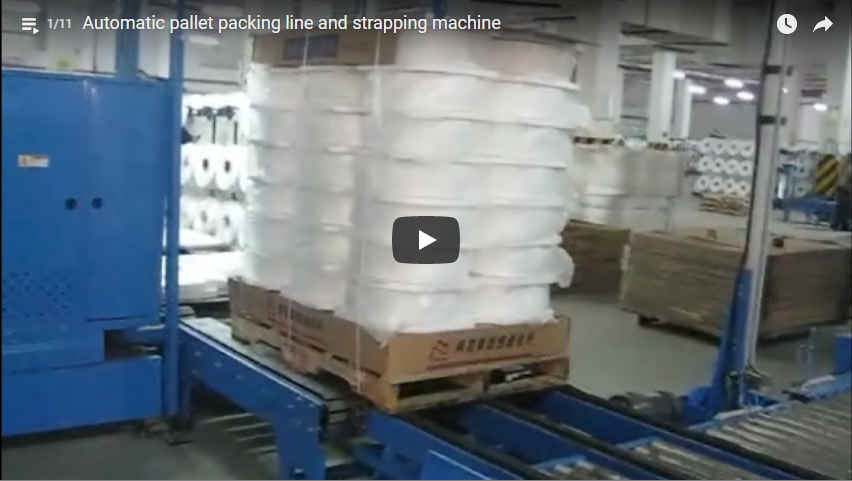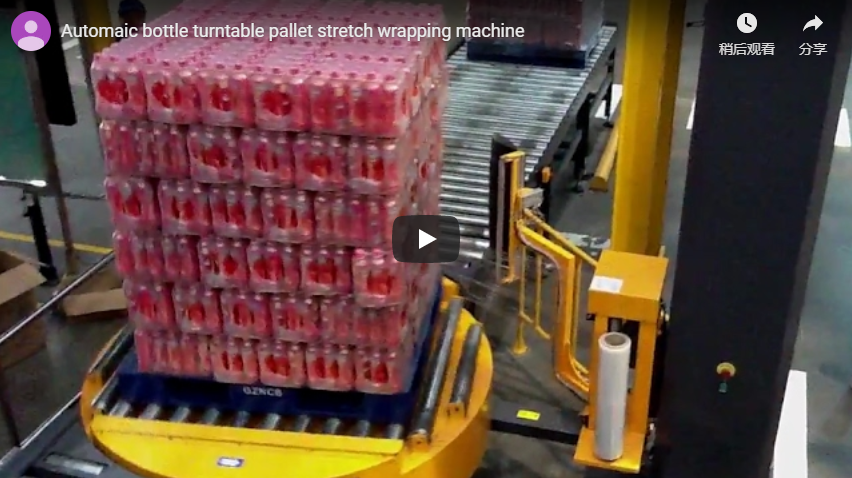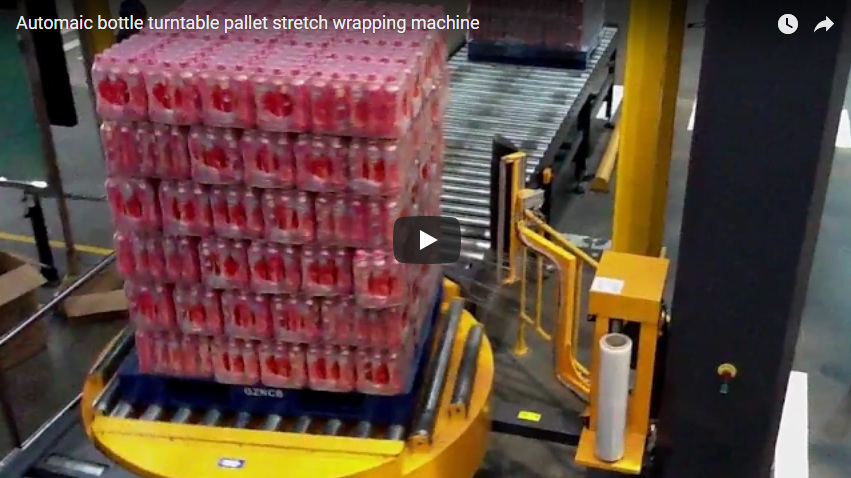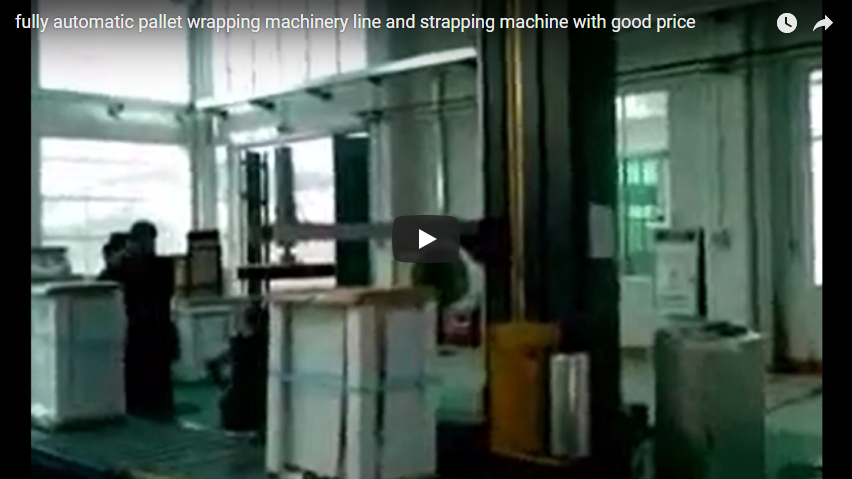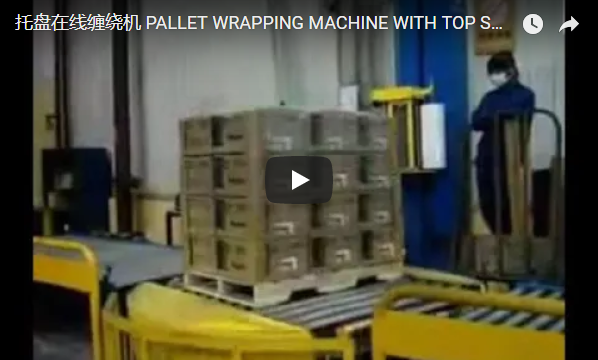Automatic pallet strapping machines represent a cornerstone technology in modern logistics and high-volume warehouse operations. These automated packaging systems are engineered to streamline the critical process of securing palletized loads, ensuring stability and integrity during handling, storage, and transit. Moving beyond manual or semi-automatic methods, fully automatic strappers significantly boost throughput, reduce labor costs, and enhance operational safety by minimizing manual handling risks. They integrate seamlessly into conveyor lines, applying horizontal or vertical straps with precision and consistency, which is vital for maintaining the structural integrity of diverse load types.
1. Core Operational Principles and Mechanisms
At its heart, an automatic pallet strapping machine executes a precise sequence:
- Pallet Positioning: The pallet is automatically conveyed into the strapping zone, often detected by sensors.
- Strap Feeding: The strapping head feeds the required length of PP (Polypropylene) or PET (Polyethylene Terephthalate) strap around the pallet through an arch or bayonet system.
- Tensioning: A tensioning mechanism applies a pre-set, adjustable force to the strap, tightly compressing the load for maximum stability. This step is critical for preventing load shifting.
- Sealing: The strap ends are joined, typically using heat sealing or friction-weld technology, creating a durable bond. Friction welding is often preferred for PET straps due to its strength and reliability.
- Cutting: The strap is cleanly cut near the seal.
- Cycle Completion: The strapping head retracts, and the secured pallet is conveyed out, ready for the next stage or storage.
From personal experience integrating these systems, the key to maximizing uptime lies in selecting a robust strapping head design known for reliability and ensuring proper alignment with upstream and downstream conveying equipment. Misalignment is a common cause of strap feed issues.
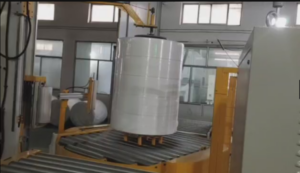
2. Key Technical Specifications Overview
Understanding the machine's parameters is crucial for matching capabilities to operational needs. Below are typical specifications; however, configurations can vary significantly.
Important Note: The parameters listed below provide a general guideline and may not precisely match the equipment shown in the video. For exact specifications tailored to your application, direct consultation is recommended.
- Machine Type: Fully Automatic Pallet Strapping Machine (Inline or Standalone)
- Typical Throughput: Up to 15-20 pallets per minute (cycle speed depends on arch size, strap pattern, and conveyor speed)
- Strapping Material Compatibility: Primarily PP (Polypropylene) and PET (Polyethylene Terephthalate)
- Strap Width Compatibility: Commonly 9mm, 12mm, 15.5mm (depending on head configuration)
- Maximum Pallet Dimensions (Example):
- Length: 1300mm
- Width: 1300mm
- Height: 2000mm (Customizable arch sizes available)
- Strapping Tension Range: Adjustable, typically up to 5000N (approx. 510 kgf), critical for load stability.
- Typical Machine Footprint (Example):
- Length: 3500mm
- Width: 2200mm (excluding safety fencing)
- Height: 2500mm (arch dependent)
- Power Requirements: Commonly 380V/400V, 50/60Hz, 3-Phase
- Estimated Power Consumption: 3.0 - 4.5 kW (peak during cycle)
- Control System: PLC (Programmable Logic Controller) based, often with HMI (Human-Machine Interface) touchscreen for diagnostics, parameter adjustments, and recipe management.
- Essential Safety Features: Emergency stop circuits, physical guarding or light curtains, interlocked access doors, low strap/fault sensors.
3. From the Field: Implementation and Operational Insights
Integrating an automatic strapper effectively involves more than just the machine itself. Based on hands-on experience:
- Integration is Key: Smooth integration with existing conveyor systems (roller or chain) is paramount. Consider buffer zones and sensor placements carefully to avoid bottlenecks.
- Strap Choice Matters: PET offers higher tensile strength and retains tension better, ideal for heavy or settling loads (like construction materials). PP is more economical and suitable for lighter, stable loads (like empty containers). Evaluate your load characteristics thoroughly.
- Maintenance Schedule: The strapping head is a complex mechanism. Adhering to the manufacturer's recommended preventative maintenance schedule for lubrication, cleaning, and wear part replacement (cutters, grippers) is non-negotiable for reliability. Unexpected downtime can quickly negate efficiency gains.
- ROI Calculation: Factor in not just labor savings but also reduced product damage claims, increased throughput capacity, and improved load safety when calculating the Return on Investment.
4. Strategic Applications Across Industries
The value of automated pallet strapping is evident in diverse operational scenarios:
- High-Volume Distribution Centers (E-commerce, Retail): In facilities processing thousands of orders daily, speed and reliability are crucial. Automatic strappers ensure consistent load security for a vast range of product types, from electronics to apparel, minimizing damage during frequent handling and multi-stage transit. This directly impacts customer satisfaction and reduces costly returns.
- Building Materials Manufacturing & Supply: Handling heavy, often bulky items like bricks, tiles, bagged cement, or lumber requires robust load containment. High-tension PET strapping applied automatically ensures pallet stability for safe yard handling, flatbed loading, and delivery to construction sites, preventing dangerous load shifts.
- Food and Beverage Production: Securing cases of beverages, canned goods, or bulk ingredients on pallets is essential for supply chain integrity. Automated strapping prevents layers from shifting or collapsing during transport to distribution hubs and retailers, crucial for maintaining product quality and preventing costly spills or spoilage. Consistency in strapping also aids in automated warehouse storage and retrieval.
- Paper and Printing Industry: Stabilizing heavy pallets of paper rolls or printed materials prevents damage to edges and surfaces during transport. Consistent tensioning is key to avoiding slippage within the load.
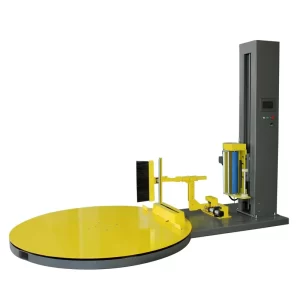
pallet stretch wrap 1 jpg 5. Selecting the Optimal System
Choosing the right machine involves assessing:
- Required Throughput: Match machine cycle speed to your line's requirements.
- Load Characteristics: Consider weight, stability, and dimensions to determine necessary tension, strap type (PP/PET), and arch size.
- Strapping Pattern: Define the number and placement of straps needed for optimal stability (e.g., 2 vertical, 1 horizontal).
- Integration Needs: Assess compatibility with existing conveyors and control systems.
- Budget vs. TCO: Consider initial cost alongside long-term operational expenses (maintenance, consumables, energy).
6. Maintenance and Safety Protocols
Routine maintenance, as outlined by the manufacturer, is vital for longevity and consistent performance. Daily checks (strap path clearance, sensor cleanliness) and scheduled preventative maintenance are essential. Safety systems, including emergency stops and perimeter guarding (fences or light curtains), must always be functional and never bypassed to ensure operator protection.
For detailed consultations or specific configuration options, please contact us:
info@fhopepack.com

